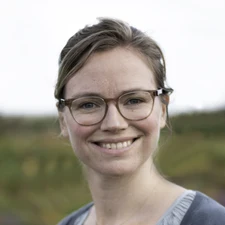Georgina Bennett

GM Geomorphology
The 2020 Division Outstanding Early Career Scientist Award is awarded to Georgina Bennett for careful field measurements and aligned earth observation; Georgina’s innovative approaches have unlocked new understanding of key controls on landslide mechanics and resultant landscape evolution.
Georgina Bennett has produced several important papers covering the evolution of glacial landscapes, the sedimentary response of post-fire landscapes, and the behavior of landslides in response to climate and tectonic forcing. Her PhD focused on the highly active Ilgraben catchment in Switzerland, where she created several DEMs from aerial photographs and, in combination with new topographic data, was able to reconstruct the spatial distribution of landsliding in the catchment. The novel result of this contribution was that Bennett separated the landslides’ magnitude frequency scaling into two distinct populations that represent different failure types. She explored the mechanics of these failures in detail and used this information to explain the observed rollover in the magnitude frequency distribution: a feature of landslide statistics that had puzzled landslide scientists for three decades.
Whilst doing her PhD, Bennett also published papers from her master’s thesis that explored how glacial retreat led to characteristic landforms in Iceland. Following her PhD, Bennett undertook a postdoc at the University of Oregon, where she used satellite data (both optical and radar) to explore deep-seated landslide behaviour. Through careful analysis she was able to show that a drought event in northern California slowed deep-seated landslides. This effect had been previously theorised, but never shown with data. She also showed how a wave of uplift, driven by migration of the Mendocino Triple Junction in northern California, left a wave of landsliding in its wake along the Eel River, coupling together tectonic driver and landscape process response. Bennett combines careful field measurements with remote sensing, and her papers are highly innovative as evidenced by her regular high-quality, well-cited publications.
